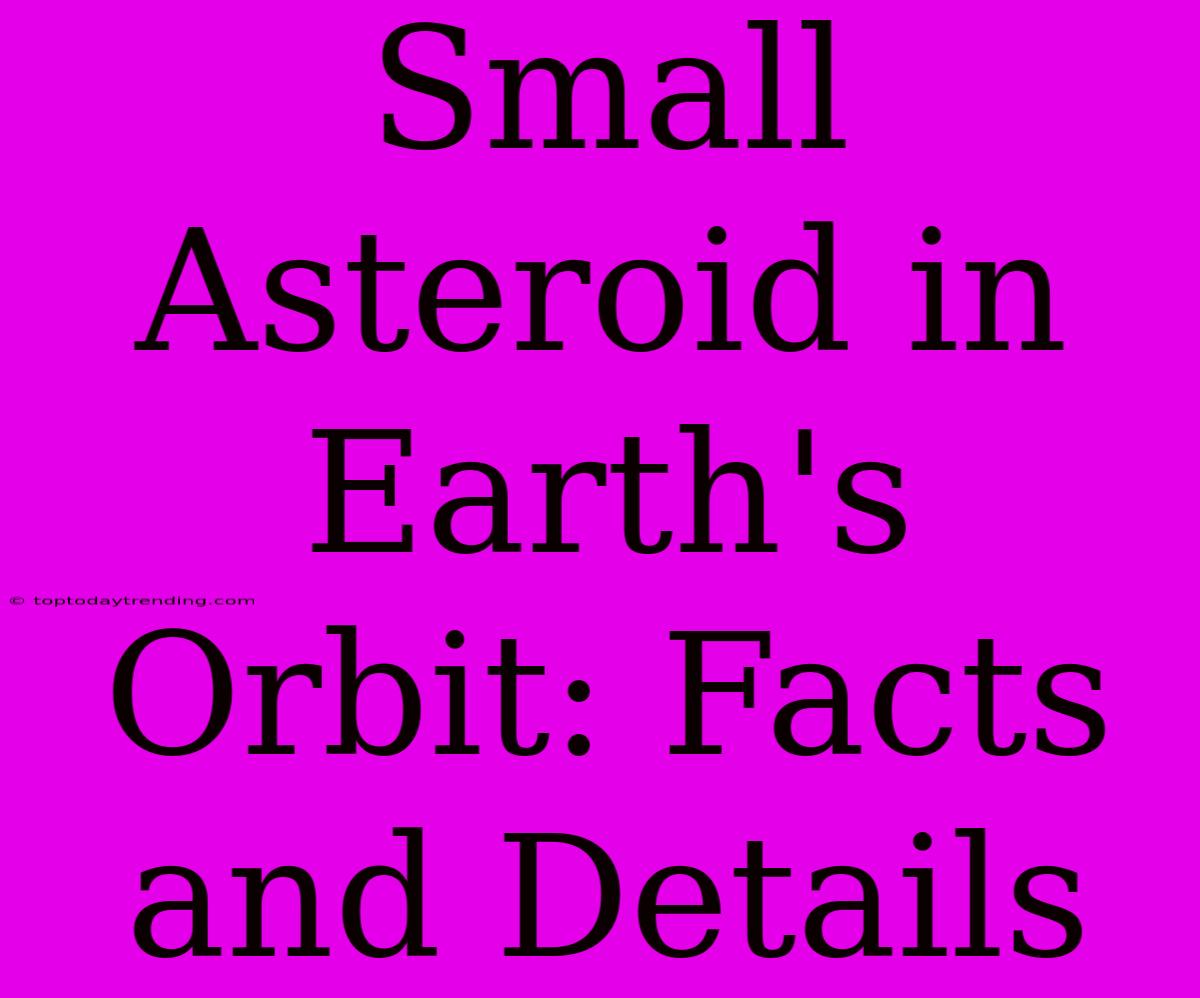Small Asteroid in Earth's Orbit: Facts and Details
The vastness of space is filled with celestial objects, from massive stars to tiny dust particles. Among these objects are asteroids, rocky bodies that orbit the sun, often found in the asteroid belt between Mars and Jupiter. While most asteroids pose no threat to Earth, occasionally, some find their way into our planet's orbit. This article will delve into the fascinating world of small asteroids in Earth's orbit, discussing their characteristics, potential risks, and ongoing research efforts.
What are Near-Earth Asteroids (NEAs)?
Near-Earth asteroids (NEAs) are asteroids that have orbits that bring them relatively close to Earth. These asteroids are categorized based on their size:
- Small NEAs: Asteroids with a diameter of less than 1 kilometer.
- Large NEAs: Asteroids with a diameter of 1 kilometer or more.
While smaller NEAs are far more common, larger NEAs pose a greater threat due to their size and potential impact energy.
Why are Small NEAs Significant?
1. Frequent Encounters: Small NEAs are much more numerous than larger ones. This means they are more likely to pass close to Earth, sometimes even entering our planet's atmosphere.
2. Potential Impacts: Although small asteroids are unlikely to cause widespread devastation, impacts can still be significant. They can cause local damage, create meteor showers, or even cause minor tsunamis if they enter the ocean.
3. Scientific Value: Studying small NEAs provides valuable insight into the early solar system. Their composition and origin offer clues about the processes that shaped our planetary system.
Impact of Small NEAs on Earth
While the majority of small asteroids burn up in the atmosphere as meteors, some can reach the surface, creating meteorites. These remnants of celestial bodies offer unique insights into the composition of asteroids and the early history of the solar system.
Famous Examples:
- Chelyabinsk Meteor: This 20-meter asteroid exploded in the atmosphere above Russia in 2013, injuring over 1,500 people and causing significant damage due to the shockwave.
- Tunguska Event: In 1908, a large explosion occurred in Siberia, believed to be caused by an asteroid impact, which flattened an area of forest the size of a city.
Ongoing Research and Mitigation Efforts
Scientists are constantly monitoring the skies for potentially hazardous asteroids. NASA's Planetary Defense Coordination Office plays a crucial role in detecting, tracking, and characterizing NEAs.
Mitigation Strategies:
- Early Detection: By identifying potentially hazardous NEAs early, we can plan for mitigation strategies.
- Deflection: Scientists are working on technologies to deflect asteroids away from Earth's path, using methods like gravity tractors or kinetic impactors.
Conclusion
Small asteroids in Earth's orbit are a constant reminder of the dynamic nature of our solar system. While most pose no immediate threat, understanding their behavior and potential impact is crucial for safeguarding our planet. Ongoing research and mitigation efforts are key to ensuring a safe future for humanity.

